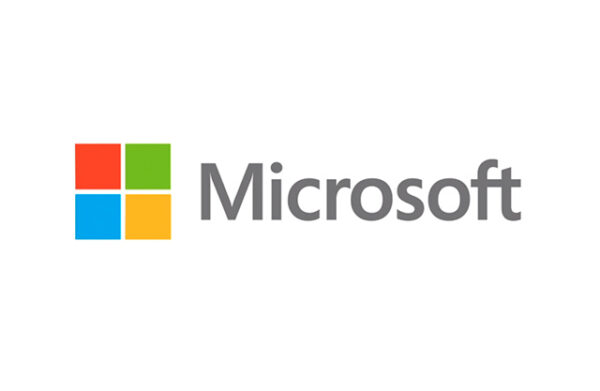
Microsoft in collaboration with Frost & Sullivan released the results of its study titled “Understanding the Cybersecurity Threat Landscape in Asia Pacific: Securing the Modern Enterprise in a Digital World”. The study reveals that the potential economic loss in Malaysia due to cybersecurity incidents can hit a staggering US$12.2 billion. This is more than 4 percent of Malaysia’s total GDP of US$296 billion.
The study aims to provide business and IT decision makers with insights on the economic cost of cybersecurity breaches in the region and identify the gaps in organizations’ cybersecurity strategies. The study involved a survey of 1,300 business and IT decision makers ranging from mid-sized organizations (250 to 499 employees) to large-sized organizations (>than 500 employees).
The study reveals that more than half of the organizations surveyed in Malaysia have either experienced a cybersecurity incident (17%) or are not sure if they had one as they have not performed proper forensics or data breach assessment (36%).
“As companies embrace the opportunities presented by cloud and mobile computing to connect with customers and optimize operations, they take on new risks,” said Dr. Dzahar Mansor, National Technology Officer, Microsoft Malaysia. “With traditional IT boundaries disappearing the adversaries now have many new targets to attack. Companies face the risk of significant financial loss, damage to customer satisfaction and market reputation—as has been made all too clear by recent high-profile breaches.”
The findings of the study were launched in the presence of CyberSecurity Malaysia, Malaysia’s national cyber security specialist agency. “Cyber-attacks have become a common occurrence not just in Malaysia but around the globe,” said Dato’ Dr. Haji Amirudin Bin Abdul Wahab, Chief Executive Officer of CyberSecurity Malaysia. “The findings of this study provide businesses with a greater understanding of the economic impact of cyber threats. As cyber security specialists, we are grateful for the efforts taken by Microsoft in spreading awareness on the importance of cyber security and we hope our efforts in creating a safer cyberspace for Malaysia will continue to align.”
The True Cost of Cybersecurity Incidents – Economic, Opportunity and Job Losses
The study revealed that:
- A large-sized organization Malaysia can possibly incur an economic loss of US$22.8 million, more than 630 times higher than the average economic loss for a mid-sized organization (US$36,000); and
- Cybersecurity attacks have resulted in job losses across different functions in three in five (61%) of organizations that have experienced an incident over the last 12 months.
To calculate the cost of cybercrime, Frost & Sullivan has created an economic loss model based on macro-economic data and insights shared by the survey respondents. This model factors in three kinds of losses which could be incurred due to a cybersecurity breach:
- Direct: Financial losses associated with a cybersecurity incident – this includes loss of productivity, fines, remediation cost, etc;
- Indirect: The opportunity cost to the organization such as customer churn due to reputation loss; and
- Induced: The impact of cyber breach to the broader ecosystem and economy, such as the decrease in consumer and enterprise spending.
“Although the direct losses from cybersecurity breaches are most visible, they are but just the tip of the iceberg,” said Sapan Agarwal, Vice President, Asia Pacific, Frost & Sullivan. “There are many other hidden losses that we have to consider from both the indirect and induced perspectives, and the economic loss for organizations suffering from cybersecurity attacks can be often underestimated.”
In addition to financial losses, cybersecurity incidents are also undermining Malaysia organizations’ ability to capture future opportunities in today’s digital economy, with more than three in five (62%) respondents stating that their enterprise has put off digital transformation efforts due to the fear of cyber-risks.
Key Cyberthreats and Gaps in Malaysia Organizations’ Cybersecurity Strategies
Although high-profile cyberattacks, such as ransomware, have been garnering a lot of attention from enterprises, the study found that for organizations in Malaysia that have encountered cybersecurity incidents, data exfiltration and data corruption are the biggest concerns as they have the highest impact with the slowest recovery time.
Besides external threats, the research also revealed key gaps in organizations’ cybersecurity approach to protect their digital estate:
- Security an afterthought: Despite encountering a cyberattack, only 23% of organizations consider cybersecurity before the start of a digital transformation project as compared to 32% of organizations that have not encountered any cyberattack. The rest of the organizations either think about cybersecurity only after they start on the project or do not consider it at all. This limits their ability to conceptualize and deliver a “secure-by-design” project, potentially leading to insecure products going out into the market;
- Creating a Complex Environment: Negating the popular belief that deploying a large portfolio of cybersecurity solutions will render stronger protection, the survey revealed that 15% of respondents with more than 50 cybersecurity solutions could recover from cyberattacks within an hour. In contrast, 71% of respondents with more than 11 to 25 cybersecurity solutions responded that they can recover from cyberattacks within an hour; and
- Lacking cybersecurity strategy: While more and more organizations are considering digital transformation to gain competitive advantage, the study has shown that a majority of respondents (42%) see cybersecurity strategy only as a means to safeguard the organization against cyberattacks rather than a strategic business enabler. A mere 20% of organizations see cybersecurity strategy as a digital transformation enabler.
“The ever-changing threat environment is challenging, but there are ways to be more effective using the right blend of modern technology, strategy, and expertise,” added Mansor. “Microsoft is empowering businesses in Malaysia to take advantage of digital transformation by enabling them to embrace the technology that’s available to them, securely through its secure platform of products and services, combined with unique intelligence and broad industry partnerships.”
Artifical Intelligence (AI) is the Next Frontier in Cybersecurity Defense
In a digital world where cyberthreats are constantly evolving and attack surface is rapidly expanding, AI is becoming a potent opponent against cyberattacks as it can detect and act on threat vectors based on data insights. The study reveals that almost three in four (73%) organizations in Malaysia have either adopted or are looking to adopt an AI approach towards boosting cybersecurity.
AI’s ability to rapidly analyze and respond to unprecedented quantities of data is becoming indispensable in a world where cyberattacks’ frequency, scale and sophistication continue to increase.
An AI-driven cybersecurity architecture will be more intelligent and be equipped with predictive abilities to allow organizations to fix or strengthen their security posture before problems emerge. It will also grant companies with the capabilities to accomplish tasks, such as identifying cyberattacks, removal of persistent threats and fixing bugs, faster than any human could, making it an increasingly vital element of any organizations’ cybersecurity strategy.
Recommendations for securing the modern enterprise in a digital world
AI is but one of the many aspects that organizations need to incorporate or adhere to in order to maintain a robust cybersecurity posture. For a cybersecurity practice to be successful, organizations need to consider People, Process and Technology, and how each of these contributes to the overall security posture of the organization.
To help organizations better withstand and respond to cyberattacks and malware infections, here are five best practices that they can consider in improving their defense against cybersecurity threats:
- Position cybersecurity as a digital transformation enabler: Disconnect between cybersecurity practices and digital transformation effort creates a lot of frustration for the employees. Cybersecurity is a requirement for digital transformation to guide and keep the company safe through its journey. Conversely, digital transformation presents an opportunity for cybersecurity practices to abandon aging practices to embrace new methods of addressing today’s risks;
- Continue to invest in strengthening your security fundamentals: Over 90% of cyber incidents can be averted by maintaining the most basic best practices. Maintaining strong passwords, conditional use of multi-factor authentication against suspicious authentications, keeping device operating systems, software and anti-malware protection up-to-date and genuine can rapidly raise the bar against cyberattacks. This should include not just tool-sets but also training and policies to support a stronger fundamental;
- Maximize skills and tools by leveraging integrated best-of-suite tools. The best tools are useless in the hands of the amateur. Reduce the number of tools and the complexity of your security operations to allow your operators to hone their proficiency with the available tools. Prioritizing best-of-suite tools is a great way to maximize your risk coverage without the risk of introducing too many tools and complexity to the environment. This is especially true if tools within the suite are well-integrated to take advantage of their counterparts;
- Assessment, review and continuous compliance: The organization should be in a continuous state of compliance. Assessments and reviews should be conducted regularly to test for potential gaps that may occur as the organization is rapidly transforming and address these gaps. The board should keep tab on not just compliance to industry regulations but also how the organization is progressing against security best practices; and
- Leverage AI and automation to increase capabilities and capacity: With security capabilities in short supply, organizations need to look to automation and AI to improve the capabilities and capacity of their security operations. Current advancements in AI has shown a lot of promise, not just in raising detections that would otherwise be missed but also in reasoning over how the various data signals should be interpreted with recommended actions. Such systems have seen great success in cloud implementations where huge volumes of data can be processed rapidly. Ultimately, leveraging automation and AI can free up cybersecurity talents to focus on higher-level activities.
This study is but one example of Microsoft’s approach towards creating a safer cyberspace for everyone. Microsoft’s continued efforts in terms of cyber safety is also apparent in the bi-annual Microsoft Security Intelligence Report (SIR) which provide in-depth data and insights into the global threat landscape globally and in Asia Pacific.
For more information on the SIR, please download the latest report here: https://info.microsoft.com/ww-landing-Security-Intelligence-Report-Vol-23-Landing-Page-eBook.html
For more information on the study, please visit: https://news.microsoft.com/apac/features/cybersecurity-in-asia/










